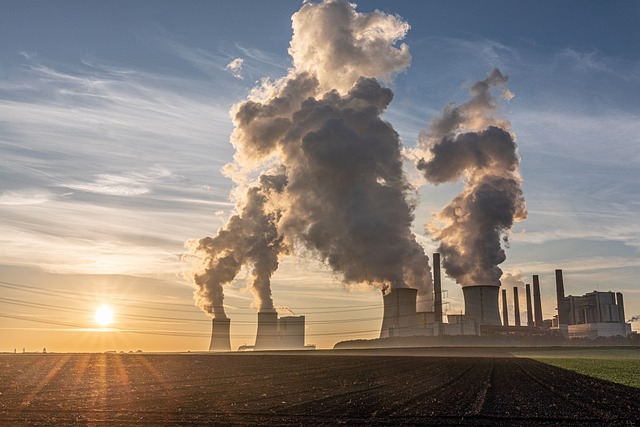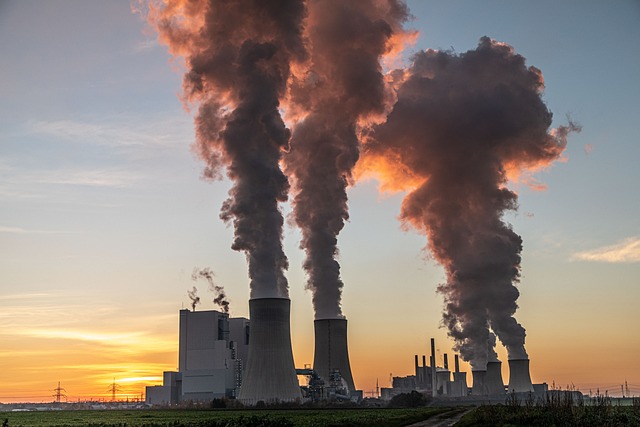Is It Possible to Reverse Global Warming Using Oilfield Technology?
When you think of petroleum engineers, images of drilling rigs and oil barrels likely come to mind. These professionals are known for extracting fossil fuels, a major contributor to climate change. But what if I told you that the same experts who have been working with oil and gas could play a key role in tackling the very problem they once helped create? Sounds paradoxical, right?
Well, brace yourselves, because some innovative minds in the oil industry are turning the tables. They are developing technology that not only reduces the impact of their work but could also help reverse global warming. Yes, you read that correctly—oilfield technology might be able to reverse climate change. Intrigued? Let’s dive in and explore how petroleum engineers are becoming unlikely climate hackers in this age of environmental awareness.
Petroleum Engineers as Climate Hackers: The Shift in Perspective
The term “climate hacker” might sound like something out of a sci-fi movie, but it’s actually an apt description of the role that petroleum engineers are starting to play. Historically, oil and gas extraction was a major driver of environmental degradation, especially with greenhouse gases being released into the atmosphere. Yet, today’s petroleum engineers are developing groundbreaking technologies to combat the very environmental issues that were once overlooked.
These experts are looking at oilfields not just as a source of energy but as potential hotspots for sustainable solutions. From carbon capture and storage (CCS) to geothermal energy production, these professionals are transforming the way we think about oil and gas.

Carbon Capture and Storage (CCS): A Game Changer
One of the most promising technologies in this field is carbon capture and storage (CCS). CCS involves capturing carbon dioxide emissions directly from sources like power plants or oil rigs and storing them underground. Yes, petroleum engineers are using their expertise to trap carbon dioxide—one of the main culprits behind global warming—before it can escape into the atmosphere.
In fact, the world’s first large-scale CCS project was initiated by petroleum engineers in the North Sea. It’s been working wonders, capturing millions of tons of CO2 each year. If this technology scales up, it could make a massive dent in global emissions.
Geothermal Energy: Harnessing Heat Beneath Our Feet Global Warming
Here’s where things get even more interesting. Petroleum engineers are not just stopping at carbon capture. Many are now exploring geothermal energy—harnessing the Earth’s natural heat. This technology is particularly exciting because it provides a renewable source of energy that doesn’t rely on fossil fuels. In fact, it uses the same principles engineers apply when extracting oil, but instead of digging for crude, they’re tapping into underground heat to generate power.
Imagine that: the same people who once drilled for oil could now be helping us tap into a clean, sustainable energy source. This might just be the most poetic twist in the story of energy production. Geothermal energy has the potential to provide 24/7 power with minimal environmental impact. It’s an energy source that’s literally “baked” into the Earth’s crust. Read more>>>
A Real-World Example: Iceland’s Success with Geothermal
Take Iceland, for example. This small island nation has been leading the charge in geothermal energy production, and petroleum engineers have been key players in making it happen. With the right combination of technology and expertise, petroleum engineers are able to extract geothermal energy in a way that’s both cost-effective and environmentally friendly.
Iceland now uses geothermal power to heat homes, generate electricity, and even grow crops in greenhouses. If other nations can follow suit, we might see a future where geothermal energy plays a central role in reducing our dependence on fossil fuels.
Enhanced Oil Recovery (EOR): A Surprising Tool for Sustainability
This next piece of technology might surprise you: Enhanced Oil Recovery (EOR). Traditionally, EOR is used to extract more oil from an oil reservoir, but in recent years, petroleum engineers have started using this technique to push CO2 into the ground, effectively storing it in empty oil reservoirs. This is another form of carbon sequestration that works hand in hand with CCS.
In this method, petroleum engineers inject CO2 into depleted oil fields, where it not only helps extract the remaining oil but also traps the carbon deep beneath the Earth’s surface, preventing it from entering the atmosphere. It’s like giving new life to an old oil field, and in doing so, contributing to the fight against climate change.

The Challenges: Can Oilfield Technology Really Save the Planet?
While the possibilities sound exciting, it’s important to remember that there are challenges ahead for global warming. For one, these technologies are expensive and require significant investment. Large-scale implementation of CCS and geothermal systems will need billions in funding, which can be difficult to secure.
Additionally, the scalability of these solutions remains uncertain. Can we really capture enough CO2 to make a meaningful difference? Can geothermal energy become a mainstream energy source in areas that aren’t naturally suited for it? These are all important questions that need to be answered. But one thing’s for sure: petroleum engineers are not sitting back and waiting for answers—they’re actively finding ways to make these technologies work.
A Call for Collaboration: Moving Beyond the Oil & Gas Industry
Here’s where things get interesting: if we want to truly reverse global warming, it’s not just petroleum engineers who need to step up. Governments, businesses, and individuals all have a part to play. The oil and gas industry, which has long been a villain in the climate change debate, needs to collaborate with environmental organizations, scientists, and even other energy sectors.
Instead of being stuck in the old narrative of fossil fuels versus renewables, the world must explore ways to integrate oilfield technologies into broader environmental goals. The best solutions often come from collaboration, and by uniting expertise from multiple disciplines, we can come up with innovative ways to tackle climate change head-on.
Conclusion: The Future of Petroleum Engineers in the Climate Crisis
So, can petroleum engineers really help reverse global warming? The answer, surprisingly, might be yes. Through the power of innovative technologies like CCS, geothermal energy, and EOR, they are proving that oilfield technology can play a critical role in combating climate change.
However, it’s important to remember that this is just one piece of the puzzle. Reversing global warming will require a combination of efforts—from renewable energy adoption to carbon-conscious policies. But with petroleum engineers leading the charge, we might just be on the path to a cleaner, greener future.
If you’re as fascinated by this potential as I am, share your thoughts in the comments below. Let’s start a conversation about how we can use the tools at our disposal to protect the planet.
Call to Action:
What are your thoughts on petroleum engineers as climate hackers? Can oilfield technology really reverse global warming? Leave a comment below or share this post with your network to spread the conversation!



